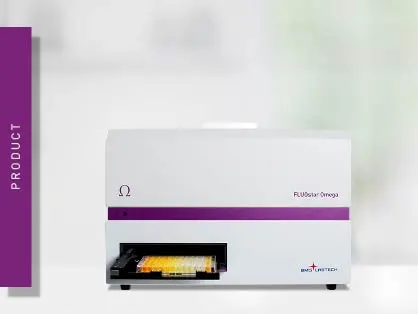
Omega Series
Upgradeable single and multi-mode microplate reader series


Studying prions and amyloid plaques demands highly sensitive fluorescence measurements. Discover how plate readers optimize real-time quaking-induced conversion assays for precise and reliable results.
This scientific talk can be used as a primer for those interested in starting to use RT-QuIC Assay for prion research.
RT-QuIC Assays (Real-Time Quaking Induced Conversion assay) uses flourescent detection of Thioflavin T and cycled shaking to produce protein multimers when a prion seed is present. The Omega reader seems very well suited to performing this assay and BMG has responded to customer suggestions to make improvements that assist in performing this assay.
You can watch the scientific talk about RT-QuIC Assays here:

A recent publication shows the utility of the RT-QuIC approach:
https://www.ncbi.nlm.nih.gov/pubmed/27685252
In this paper, entitled: Inactivation of Prions and Amyloid Seeds with Hypochlorous Acid, Dr. Hughson and his colleagues describe an approach that could be extremely useful in inactivating prions. Prions have proven to be extremely difficult to inactivate. This paper outlines a weakly acidic treatment that although capable of inactivating prions is not a hazard to users or too many surfaces that would need to be treated. The results herald an approach that would be suitable for use in many clinical, agricultural and environmental applications!
BMG is very excited to be associated with the excellent work that is being done using RT-QuIC Assays.
Upgradeable single and multi-mode microplate reader series